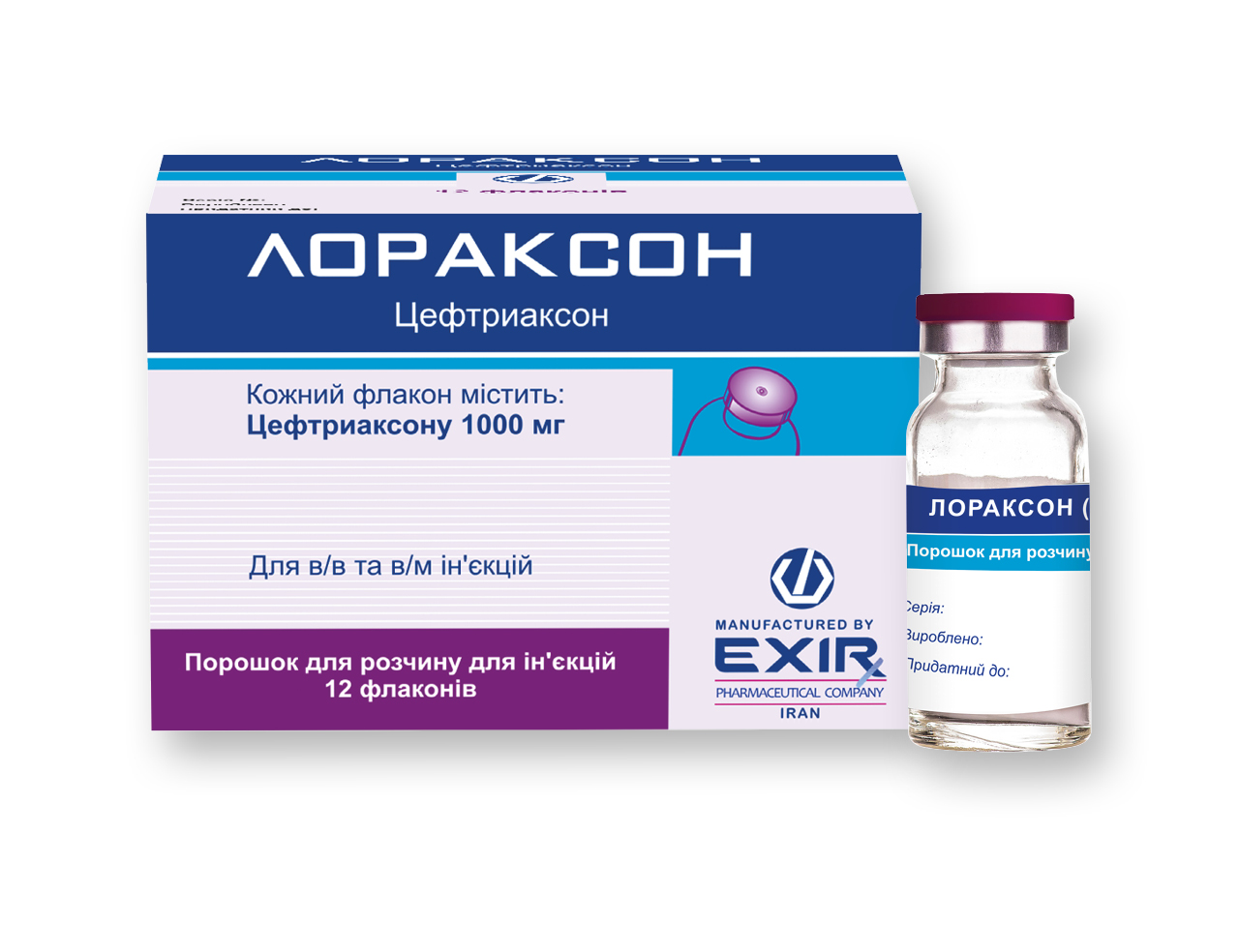
Ceftriaxone
powder for solution for injection in vials No. 12
Instructions Normative documentsComposition
1 vial contains ceftriaxone sodium in terms of ceftriaxone – 500 or 1000 mg.
Dosage form
Powder for solution for injection
Pharmacological group
Antibacterial medications for systemic use. Cephalosporins of III generation. ATC code J01D D04
Pharmacological properties
Ceftriaxone inhibits bacterial cell wall synthesis following attachment to penicillin binding proteins (PBPs). This results in the interruption of cell wall (peptidoglycan) biosynthesis, which leads to bacterial cell lysis and death.
Commonly susceptible species
Gram-positive aerobes
Staphylococcus aureus (methicillin-susceptible)£
Staphylococci coagulase-negative (methicillin-susceptible)£
Streptococcus pyogenes (Group A)
Streptococcus agalactiae (Group B)
Streptococcus pneumoniae
Viridans Group Streptococci
Gram-negative aerobes
Borrelia burgdorferi
Haemophilus influenzae
Haemophilus parainfluenzae
Moraxella catarrhalis
Neisseria gonorrhoea
Neisseria meningitidis
Proteus mirabilis
Providencia spp
Treponema pallidum
Indications
Ceftriaxone is indicated in the treatment of the following infections in adults and children including term neonates (from birth):
Bacterial Meningitis
Community acquired pneumonia
Hospital acquired pneumonia
Acute otitis media
Intra-abdominal infections
Complicated urinary tract infections (including pyelonephritis)
Infections of bones and joints
Complicated skin and soft tissue infections
Gonorrhoea
Syphilis
Bacterial endocarditis
Ceftriaxone may be used:
For treatment of acute exacerbations of chronic obstructive pulmonary disease in adults
For treatment of disseminated Lyme borreliosis (early (stage II) and late (stage III)) in adults and children including neonates from 15 days of age.
For Pre-operative prophylaxis of surgical site infections
In the management of neutropenic patients with fever that is suspected to be due to a bacterial infection
In the treatment of patients with bacteraemia that occurs in association with, or is suspected to be associated with, any of the infections listed above
SIDE EFFECTS
The most frequently reported adverse reactions for ceftriaxone are eosinophilia, leucopenia, thrombocytopenia, diarrhoea, rash, and hepatic enzymes increased.